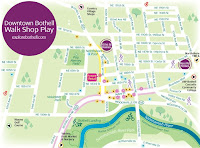 nded the opening and discusses the reasons why Google selected Kirkland for its new campus:
nded the opening and discusses the reasons why Google selected Kirkland for its new campus: “best high-tech places in the world” states Alan Eustace, Google Senior Vice President.
“I’d rather be part of a community than just another building.” states Larry Page, Google Co-Founder.
Google’s reasons for choosing Kirkland are not only held by the business community but echoed by residents and employees as well. First and foremost whether resident, employee or employer we are all striving to be part of a larger community and in turn, community needs all these components to thrive. The pieces need to be thoughtfully designed, compact, sustainable and with a focus towards quality of life. Something Kirkland has.
A walkable community (i.e. Kirkland) by definition fulfills all these criteria by putting work, play, home and the environment together in a safe and thoughtfully designed way that merges resident, employee and employer into one. 
The Google campus is another significant addition to the areas cluster of high tech companies, higher education such as the University of Washington, and other businesses together creating collaboration and synergy that will foster stability and confidence in our region for both residents and employers. This confidence in turns supports necessary infrastructure required to sustain a vibrant urban area.
Similarly, the new Nettleton Community is also a significant addition to the City of Kirkland, in response to the demands to live closer to employment, entertainment, schools… The new community provides a variety of housing to the area, maintains the look and feel of Kirkland through classic Northwest Architecture and the restoration of the Nettleton Mansion a local landmark all within an once underdeveloped urban infill site. The location of the Nettleton site is only a little over quarter mile from the new Google Campus making living and working here “eco” and “economically” friendly (i.e. lose the car), and healthy and sustainable, (i.e. walk and frequent local businesses). 




